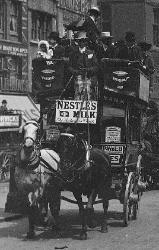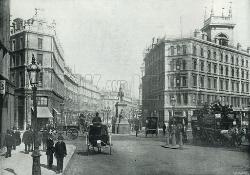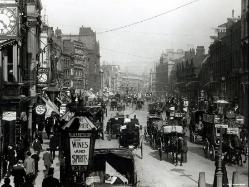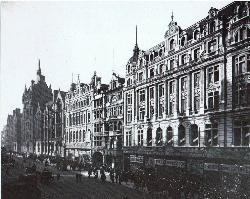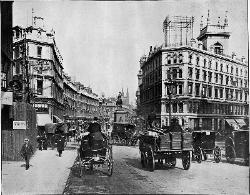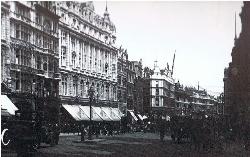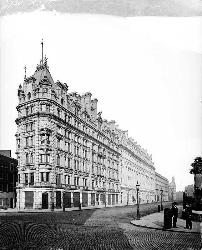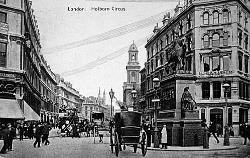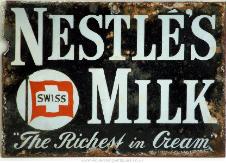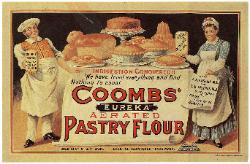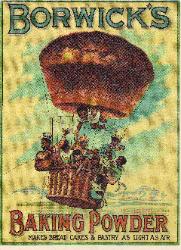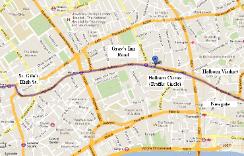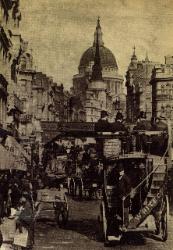| ********** |
| XXX |
| Borwick’s Baking Powder advertised 1890s www.jeffreygreen.co.uk/045-borwicks-baking-powder-advertised-1890s |
| XXX |
| XXX |
| XXX |
| Nestle's Swiss Milk Sign c. 1890 www.advertisingantiques.co.uk/Default.aspx?tabid=954&ItemID=2511 |
| XXX |

| If you have a picture you'd like us to feature a picture in a future quiz, please email it to us at CFitzp@aol.com. If we use it, you will receive a free analysis of your picture. You will also receive a free Forensic Genealogy CD or a 10% discount towards the purchase of the Forensic Genealogy book. |
| ********** |

| If you enjoy our quizzes, don't forget to order our books! Click here. |
| Quiz #350 Results |
| How Robert Solved the Puzzle |
| Answer to Quiz #350 May 6, 2012 |
| 1. What is the name of the large building in the background? 2. What is its historical significance? 3. About what year was the photo taken? |
| This photo was taken by Peter Amsden's grandfather. |
| Analysis of the Carriage Route submitted by Barry Hollister |
| Congratulations to Our Winners! Robert Austin Moshe Schaeffer Stephen P. Hall Ben Hollister Claudio Trapote Diane Legere Janis Martin Daniel Jolley Fiona Brooker |
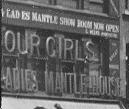
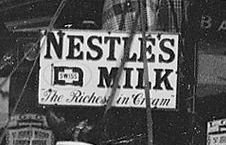


The London General Omnibus Company (LGOC) was
founded in 1855 to amalgamate and regulate the many
independent horse-drawn omnibus services then
operating in London. Originally an Anglo-French
enterprise, also known as the Compagnie Generale des
Omnibus de Londres, the LGOC soon became the
largest omnibus operator in London. It bought out
hundreds of independently-owned buses and
established a consistent level of service for its fleet.
Within a year, the LGOC controlled 600 of London's
810 omnibuses. In 1902 it looked at an option to
purchase a competitor, the Star Omnibus Company,
but it was unable to complete negotiations.
LGOC began using motor omnibuses in 1902, and the
last LGOC horse-drawn bus ran on 25 October 1911.
founded in 1855 to amalgamate and regulate the many
independent horse-drawn omnibus services then
operating in London. Originally an Anglo-French
enterprise, also known as the Compagnie Generale des
Omnibus de Londres, the LGOC soon became the
largest omnibus operator in London. It bought out
hundreds of independently-owned buses and
established a consistent level of service for its fleet.
Within a year, the LGOC controlled 600 of London's
810 omnibuses. In 1902 it looked at an option to
purchase a competitor, the Star Omnibus Company,
but it was unable to complete negotiations.
LGOC began using motor omnibuses in 1902, and the
last LGOC horse-drawn bus ran on 25 October 1911.
In 1908 the LGOC bought the Road Car Company, the Vanguard Company, and its
other main rivals, thereby gaining a virtual monopoly in London.
In 1912, the Underground Group, which owned most of the London Underground,
bought the LGOC. In 1933, the LGOC, along with the rest of the Underground Group,
became part of the new London Passenger Transport Board. The name London General
fell into disuse, and London Transport instead became synonymous with the red
London bus
other main rivals, thereby gaining a virtual monopoly in London.
In 1912, the Underground Group, which owned most of the London Underground,
bought the LGOC. In 1933, the LGOC, along with the rest of the Underground Group,
became part of the new London Passenger Transport Board. The name London General
fell into disuse, and London Transport instead became synonymous with the red
London bus
How? I deciphered the route on the LGOC bus, put that in Google maps, then looked
for a road with a long bend, then street viewed until I found the building.
for a road with a long bend, then street viewed until I found the building.
Great quiz this week. I really enjoyed picking through all the clues in the picture. I
initially got hung up on the sign that said 'Liverpool Street Station' on the carriage
staircase on the left of the picture. For some reason I assumed that the photograph had
to be taken near there, and spent quite a bit of time looking for our building in the
wrong area. Ladies Mantle Show Room/House and Thomas Browne Advertising were
dead ends, as were the advertisements on the carriages. Slaters Restaurant was more
helpful, but gave multiple possible locations. The real key, though, was the route
placard in the front window of the carriage. Doing Google Image searches for the
various locations finally took me to Holborn and a positive match for our building.
initially got hung up on the sign that said 'Liverpool Street Station' on the carriage
staircase on the left of the picture. For some reason I assumed that the photograph had
to be taken near there, and spent quite a bit of time looking for our building in the
wrong area. Ladies Mantle Show Room/House and Thomas Browne Advertising were
dead ends, as were the advertisements on the carriages. Slaters Restaurant was more
helpful, but gave multiple possible locations. The real key, though, was the route
placard in the front window of the carriage. Doing Google Image searches for the
various locations finally took me to Holborn and a positive match for our building.

was completed by 1879. Changes were made to the
facade over time, but without knowing the details of
those changes, we would have to say, at least, that our
photograph was probably not taken prior to 1879. The
London Transport Museum's web site says that the style
of carriage in the foreground of the picture is a 'garden
seat' bus. According to them, this type of bus wasn't
adopted until the 1880s. I also found two photographs
that are dated circa 1894 and 1896 that show the
buildings on the viaduct completed.
I belatedly realized that the overhead lines in the picture
might be the key. They were absent in earlier photographs
as well as the ones from the 1890s. A Google search
quickly revealed that Thomas Edison had made an offer in
facade over time, but without knowing the details of
those changes, we would have to say, at least, that our
photograph was probably not taken prior to 1879. The
London Transport Museum's web site says that the style
of carriage in the foreground of the picture is a 'garden
seat' bus. According to them, this type of bus wasn't
adopted until the 1880s. I also found two photographs
that are dated circa 1894 and 1896 that show the
buildings on the viaduct completed.
I belatedly realized that the overhead lines in the picture
might be the key. They were absent in earlier photographs
as well as the ones from the 1890s. A Google search
quickly revealed that Thomas Edison had made an offer in
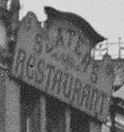
The date was a little trickier. The key seemed to be the buildings under construction on
the Holborn Viaduct. If we could say for certain when they were being built, then the
dating could be more precise. Sadly, I couldn't find anything that talked about that
directly. We do know that The Prudential Assurance building's initial construction phase
the Holborn Viaduct. If we could say for certain when they were being built, then the
dating could be more precise. Sadly, I couldn't find anything that talked about that
directly. We do know that The Prudential Assurance building's initial construction phase
1881 to supply the viaduct with electricity on a temporary basis. He set up a central
generating station in the basement of No. 57 Holborn Viaduct, and ran Edison tubes in
subways under the viaduct that supplied streetlights and various buildings along the
generating station in the basement of No. 57 Holborn Viaduct, and ran Edison tubes in
subways under the viaduct that supplied streetlights and various buildings along the

route with electricity. The experiement ran from 1882 to 1886, so if the wires in the
picture are related to this, then the photograph had to be taken some time between those
dates.
Anyway, thanks again for another good test Colleen. I spent way too much time on this
one, but I had a good time.
picture are related to this, then the photograph had to be taken some time between those
dates.
Anyway, thanks again for another good test Colleen. I spent way too much time on this
one, but I had a good time.
| ********** |
| Robert's Further Research |
I really like [this first picture]. It appears
to be taken around the same time as the
quiz picture, but just a little bit farther
down the street. The second picture must
have been taken just slightly earlier since
the construction of the buildings on the
viaduct aren't quite as far along. The third
picture must be a few years later because
the buildings are finished. It's interesting
to note all the overhead wires in the earlier
pictures, and the relative absence of them
in the later ones. I would love to know
what the story is there.
I know what you mean about the details
and the drama. I love looking at pictures
like those and imagining what life must
have been like for them. Ultimately,
though, I'm glad to be looking in on it
from my end. I think life was probably
pretty brutal back then.
Robert Austin
to be taken around the same time as the
quiz picture, but just a little bit farther
down the street. The second picture must
have been taken just slightly earlier since
the construction of the buildings on the
viaduct aren't quite as far along. The third
picture must be a few years later because
the buildings are finished. It's interesting
to note all the overhead wires in the earlier
pictures, and the relative absence of them
in the later ones. I would love to know
what the story is there.
I know what you mean about the details
and the drama. I love looking at pictures
like those and imagining what life must
have been like for them. Ultimately,
though, I'm glad to be looking in on it
from my end. I think life was probably
pretty brutal back then.
Robert Austin
| London General Obnibus Company en.wikipedia.org/wiki/London_General_Omnibus_Company |
| Construction wires on the Holborn viaduct. |
| Robert should get a prize. I didn't notice the Viaduct construction, and I would think that this must be a clincher. Certainly stirred things up. A very interesting observation about overhead wires. I have never really thought about it, but even today there are very few overhead wires in the central parts of London. I think that electrics came along at around the same time that considerably developments were taking place, such as underground trains. It was not long before all of this wire was channeled below the roads. The London tube network carries thousands of cables to this day. An obvious route for them. Peter Amsden Submitter of this week's photo |
| Electrical wires over the street. |
| Answers: 1. Holborn Bars is the large building with the spires, with the Prudential Assurance building is the one closer to the camera, to the right behind the carriage. 2. Holborn Bars was the toll gate into Old London. 3. c. 1895 - 1902. |
| ********** |
| High Holborn - 1900 http://www.arthurlloyd.co.uk/TheatreRoyalHolborn.htm |
| ********** |

| St John's Wood London Bridge Baker St Oxford St Holborn Bank So SJW to LB via the other places. |

I reckon PW is Prince of Wales. The second word looks like Wales and there seems to
be a smaller and short word just before it. Not sure why though as I can't find any
relating reference. May be something to do with a pub? Can't think of any other use of
PoW.
Barry Hollister
be a smaller and short word just before it. Not sure why though as I can't find any
relating reference. May be something to do with a pub? Can't think of any other use of
PoW.
Barry Hollister
| ********** |

| Coomb's Flour Ad c 1888 www.flickr.com/photos/paulmalon/6014534460/sizes/l/in/photostream/ |

No one would claim
that publicity and
advertisements can be
a reliable source of
social history, but the
posters, enamel signs,
and adverts in the
press reveal aspects
of life decades ago.
that publicity and
advertisements can be
a reliable source of
social history, but the
posters, enamel signs,
and adverts in the
press reveal aspects
of life decades ago.
| In the 1890s several manufacturers promoted their products in order to get them requested by name in shops. Patent medicines and household goods were heavily advertised. The baking powder made by George Borwick and Sons (a factory was in Croydon) was promoted using this image (above). Bread so light that it could be used as a balloon and carry nine passengers -”as light as air” indeed. But why are the passengers black? An American counterpart, the Royal Baking Powder Company, conducted a massive advertising campaign all over the U.S.A. from 1893, so perhaps Borwick’s advert was borrowed from America? But the loaf carried by the senior male (left) is a cottage loaf, a very English loaf. George Borwick’s son was knighted in 1902 and in 1922 became the first baron. Two of his sons inherited, and the 3rd baron’s son James (1917-2007) was the 4th baron. How much baking powder was sold in 19th century England? Borwick’s sales campains seem to have worked - for decades later when this was reproduced as a postcard it had the name as ”Borthwick”, so advertising seems to have been sensible. But why the black family as passengers in the bread-balloon? |
Holborn is an area of central London and
also the name of the area's principal
street, known as High Holborn between
St. Giles's High Street and Gray's Inn
Road (the junction being roughly where
Holborn Bar — the entrance to the City of
London — once was) and then Holborn
Viaduct between Holborn Circus and
Newgate Street. The street since
boundary changes in 1994 runs along the
boundary between the London Borough of
Camden and the City of London;
previously the boundary was less obvious
in the area and crossed the street at
Holborn Bar.
also the name of the area's principal
street, known as High Holborn between
St. Giles's High Street and Gray's Inn
Road (the junction being roughly where
Holborn Bar — the entrance to the City of
London — once was) and then Holborn
Viaduct between Holborn Circus and
Newgate Street. The street since
boundary changes in 1994 runs along the
boundary between the London Borough of
Camden and the City of London;
previously the boundary was less obvious
in the area and crossed the street at
Holborn Bar.
The area's first mention is in a charter of
Westminster Abbey, by King Edgar, dated
to 959. This mentions "the old wooden
church of St Andrew" (St Andrew,
Holborn). The name Holborn may be
derived from the Middle English "hol" for
hollow, and bourne, a brook, referring to
the River Fleet as it ran through a steep
valley to the east. Historical cartographer
William Shepherd in his Plan of London
about 1300 labels the Fleet as "Hole
Bourn" where it passes to the east of St
Andrew's church. However, the 16th
century historian John Stow attributes the
name to the Old Bourne ("old brook"), a
small stream which he believed ran into
the Fleet at Holborn Bridge, a structure
lost when the river was culverted in 1732.
The exact course of the stream is
Westminster Abbey, by King Edgar, dated
to 959. This mentions "the old wooden
church of St Andrew" (St Andrew,
Holborn). The name Holborn may be
derived from the Middle English "hol" for
hollow, and bourne, a brook, referring to
the River Fleet as it ran through a steep
valley to the east. Historical cartographer
William Shepherd in his Plan of London
about 1300 labels the Fleet as "Hole
Bourn" where it passes to the east of St
Andrew's church. However, the 16th
century historian John Stow attributes the
name to the Old Bourne ("old brook"), a
small stream which he believed ran into
the Fleet at Holborn Bridge, a structure
lost when the river was culverted in 1732.
The exact course of the stream is
uncertain, but according to Stow it started in one
of the many small springs near Holborn Bar, the
old City toll gate on the summit of Holborn Hill.
This is supported by a map of London and
Westminster created during the reign of Henry
VIII that clearly marks the street as 'Oldbourne'
and 'High Oldbourne'. Other historians, however,
find the theory implausible, in view of the slope
of the land.
In the 18th century, Holborn was the location of
the infamous Mother Clap's molly house but in
the modern era High Holborn has become a
centre for entertainment venues to suit more
general tastes: 22 inns or taverns were recorded
in the 1860s and the Holborn Empire, originally
Weston's Music Hall, stood between 1857 and
of the many small springs near Holborn Bar, the
old City toll gate on the summit of Holborn Hill.
This is supported by a map of London and
Westminster created during the reign of Henry
VIII that clearly marks the street as 'Oldbourne'
and 'High Oldbourne'. Other historians, however,
find the theory implausible, in view of the slope
of the land.
In the 18th century, Holborn was the location of
the infamous Mother Clap's molly house but in
the modern era High Holborn has become a
centre for entertainment venues to suit more
general tastes: 22 inns or taverns were recorded
in the 1860s and the Holborn Empire, originally
Weston's Music Hall, stood between 1857 and
1960, when it was pulled down after structural damage sustained in the Blitz. The
theatre premièred the first full-length feature film in 1914, The World, the Flesh and the
Devil, a 50-minute melodrama filmed in Kinemacolour.
Charles Dickens took up residence in Furnival's Inn, on the site of the former Prudential
building designed by Alfred Waterhouse now named "Holborn Bars". Dickens put his
character "Pip", in Great Expectations, in residence at Barnard's Inn opposite, now
occupied by Gresham College. Staple Inn, notable as the promotional image for Old
Holborn tobacco, is nearby. The three of these were Inns of Chancery. The most
northerly of the Inns of Court, Gray's Inn, is in Holborn, as is Lincoln's Inn: the area
has been associated with the legal professions since mediaeval times, and the name of
the local militia (now Territorial Army unit, the Inns of Court & City Yeomanry) still
reflects that. Subsequently the area diversified and become recognisable as the modern
street. A plaque stands at number 120 commemorating Thomas Earnshaw's invention
of the Marine chronometer, which facilitated long-distance travel. At the corner of
Hatton Garden was the old family department store of Gamages. Until 1992, the
London Weather Centre was located in the street. The Prudential insurance company
relocated in 2002. The Daily Mirror offices used to be directly opposite it, but the site is
now occupied by Sainsbury's head office.
theatre premièred the first full-length feature film in 1914, The World, the Flesh and the
Devil, a 50-minute melodrama filmed in Kinemacolour.
Charles Dickens took up residence in Furnival's Inn, on the site of the former Prudential
building designed by Alfred Waterhouse now named "Holborn Bars". Dickens put his
character "Pip", in Great Expectations, in residence at Barnard's Inn opposite, now
occupied by Gresham College. Staple Inn, notable as the promotional image for Old
Holborn tobacco, is nearby. The three of these were Inns of Chancery. The most
northerly of the Inns of Court, Gray's Inn, is in Holborn, as is Lincoln's Inn: the area
has been associated with the legal professions since mediaeval times, and the name of
the local militia (now Territorial Army unit, the Inns of Court & City Yeomanry) still
reflects that. Subsequently the area diversified and become recognisable as the modern
street. A plaque stands at number 120 commemorating Thomas Earnshaw's invention
of the Marine chronometer, which facilitated long-distance travel. At the corner of
Hatton Garden was the old family department store of Gamages. Until 1992, the
London Weather Centre was located in the street. The Prudential insurance company
relocated in 2002. The Daily Mirror offices used to be directly opposite it, but the site is
now occupied by Sainsbury's head office.
| ********** |
| Comments from Our Readers |
As for the year, I started by trying to find information on street gas lamps but was
surprised to find that they were used well into the 1900's, so that was a deadend. So
then I looked up when Nestle's Milk came to the US and UK which was the early
1900's. I decided that it had to be London when I found that Borwick's baking powder
was distributed in the UK.
It also had to be the early 1900's because of the horse drawn carriages, it could have
been earlier, but the men's hats told me it was around the turn of the century. I also
found a video on Utube that was from Thomas Edison in 1903 that was extremely close
to the image. Nestle's ads and all. The last item that made me decide it was about 1900
was the Slaters' restaurant picture on a website that I found that was also 1900 and
again the clothes in the drawing were similar to the picture.
I apologize for not citing my sources, but to be honest, it felt good not to have to for a
change! :-) I'm going to go back to it and see what else I can find. My next guess is
going to be Liverpool because I did notice a sign that said ...pool Station and almost
started looking in that area, but thought it was just on a carriage that could have been
headed that way. Although I remember seeing something about Baker St too... I
should have known to check them out first! Anyway, thanks so much for your
personal email, I think you do amazing work! I'll definitely be back at your site and
trying more quizzes, I'm obsessed! Diane Legere
*****
Wow this is a good one it has been fun spent over 5 hours on it I would say it is in
London taken about 1885 to 1900. Moshe Schaeffer
surprised to find that they were used well into the 1900's, so that was a deadend. So
then I looked up when Nestle's Milk came to the US and UK which was the early
1900's. I decided that it had to be London when I found that Borwick's baking powder
was distributed in the UK.
It also had to be the early 1900's because of the horse drawn carriages, it could have
been earlier, but the men's hats told me it was around the turn of the century. I also
found a video on Utube that was from Thomas Edison in 1903 that was extremely close
to the image. Nestle's ads and all. The last item that made me decide it was about 1900
was the Slaters' restaurant picture on a website that I found that was also 1900 and
again the clothes in the drawing were similar to the picture.
I apologize for not citing my sources, but to be honest, it felt good not to have to for a
change! :-) I'm going to go back to it and see what else I can find. My next guess is
going to be Liverpool because I did notice a sign that said ...pool Station and almost
started looking in that area, but thought it was just on a carriage that could have been
headed that way. Although I remember seeing something about Baker St too... I
should have known to check them out first! Anyway, thanks so much for your
personal email, I think you do amazing work! I'll definitely be back at your site and
trying more quizzes, I'm obsessed! Diane Legere
*****
Wow this is a good one it has been fun spent over 5 hours on it I would say it is in
London taken about 1885 to 1900. Moshe Schaeffer
| Thomas Edison Film Footage London 1903 |
| ********** |
| ********** |
| ********** |







